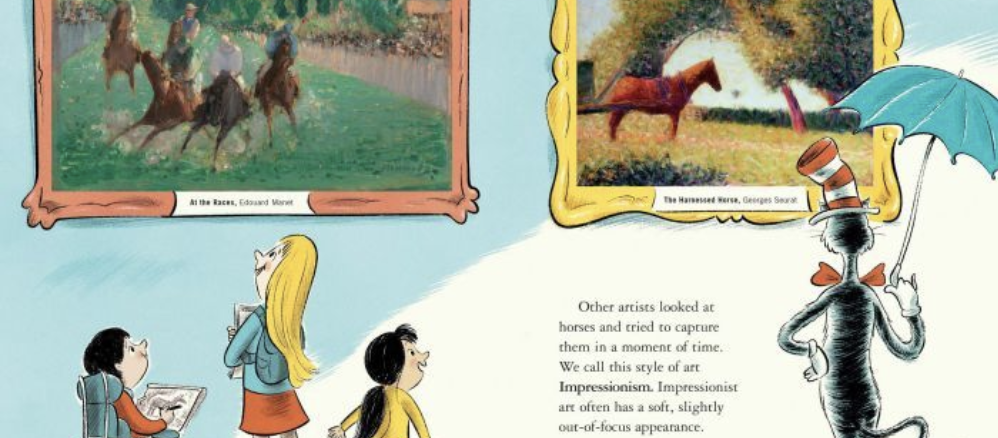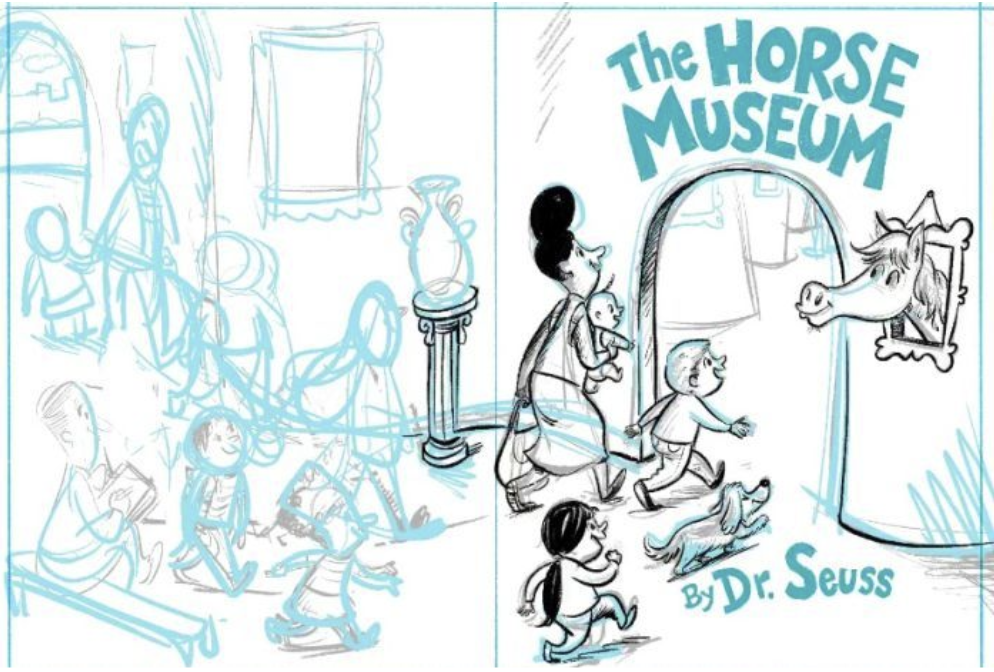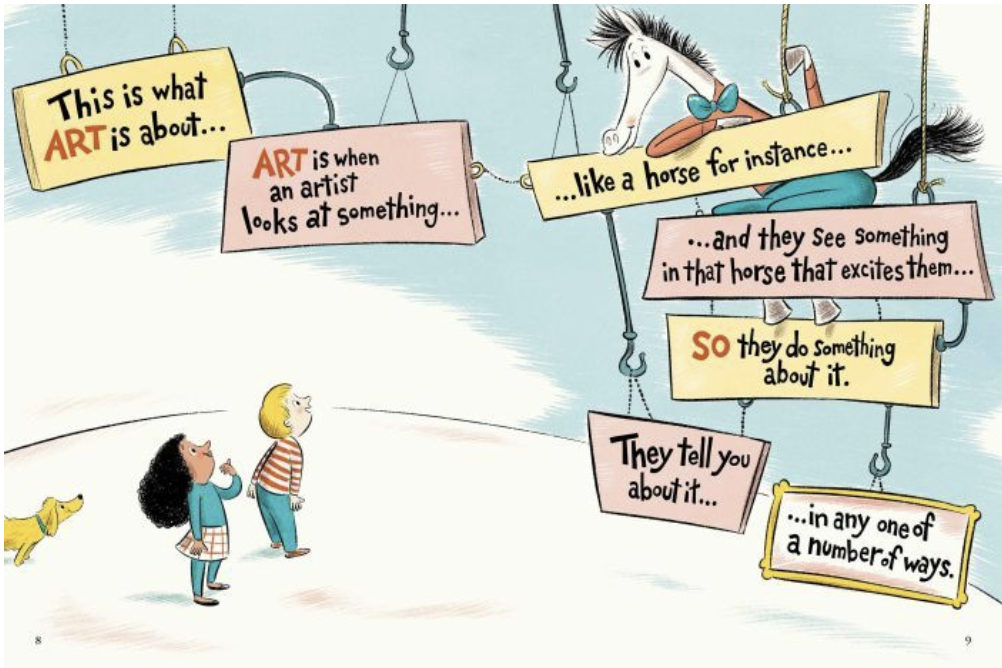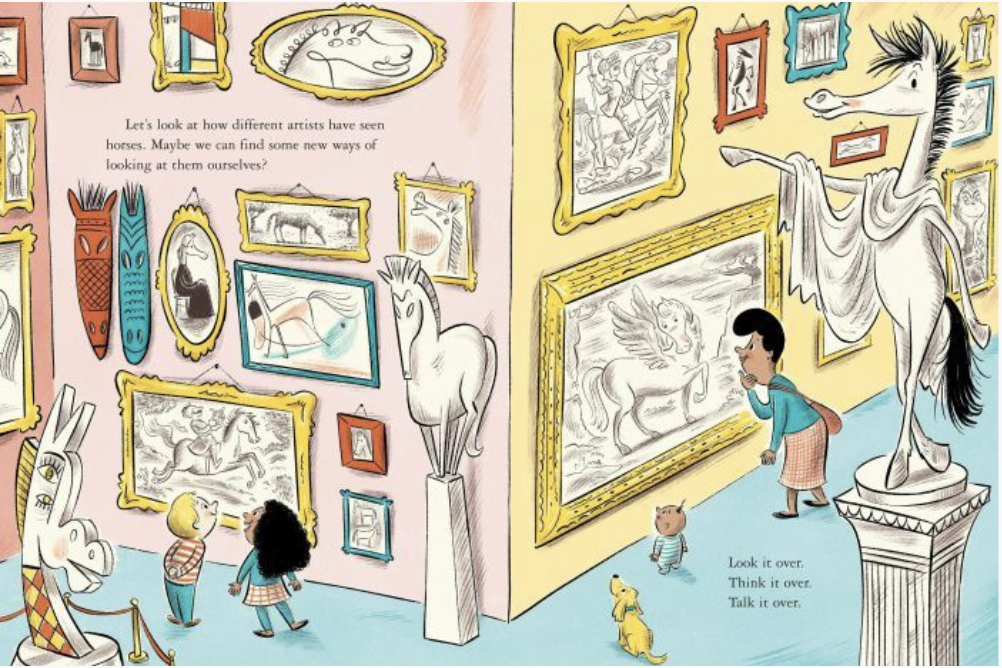
A long-lost Dr Seuss book with cameo appearances by The Cat in the Hat and the Grinchwill soon be available to delight children around the world.
Notes and sketches for the missing book, which experts believe were done as far back as the early 1950s, were discovered by Dr. Seuss’s widow Audrey, while going through his studio in 2012, more than 20 years after the famed children’s writer and illustrator’s death,.
She found a treasure trove of notes and sketches for the missing book called The Horse Museum.
And after a global search for an artist, Australian illustrator Andrew Joyner asked to illustrate the new book.
“I couldn’t have imagined that this type of job would come to me,” Joyner told the ABC.
“I loved Dr. Seuss when I was a kid growing up in the ’70s — it still seems slightly surreal that I got the opportunity.”
There was no official record to go with the drawings, but experts believe they were done as far back as the early 1950s.
The story follows a horse as it guides a group through a museum looking at the real-life examples of how artists have imagined the humble horse.
It includes reproductions of more than 30 artworks about horses, from artists like Pablo Picasso to Susan Rothenberg and Jackson Pollock.

It’s not the first time a book by Dr. Seuss, aka Theodor Geisel, has been posthumously produced, with What Pet Should I Get? discovered in 2015, having believed to have been written between 1958 and 1962.
Joyner is no novice when it comes to illustrating children’s books, having earned acclaim for his work on bestselling works like The Terrible Plop and Too Many Elephants in This House.
But it was his work on a book called The Pink Hat that drew the attention of publishers in the US.
“I just think there’s something in my style, probably because I grew up and loved Dr. Seuss — I don’t draw exactly like him, but there’s some element of his work that has influenced me,” he said.
Joyner signed the contract and was sworn to secrecy, with not even his closest friends aware of the work he was doing.
“It was good to work on it in secret,” he said.
“I think I would have found it very hard to work on it if I was thinking about the gravity of the job.”

Joyner grew up on a diet of Dr. Seuss and names some of the more iconic titles among his favourites: Oh, The Places You’ll Go and The Cat In The Hat.
It was the cat that was forefront in his mind as he set about the work, done entirely on an iPad, that attempted to paint a Seuss-esque picture while also working around other artists and their horse images.
Rather than be daunted by the task, Joyner said it helped him.
“Because I had to draw my illustrations around artworks by people like Picasso and Dali and things like that, it provided a nice sort of restriction to work with,” he said.
“Illustrators love restrictions, really. We don’t want a completely blank canvas.”
As for why Dr. Seuss has such lasting appeal, Joyner said he had a charm that was impossible to fake.
“That’s a really elusive aspect and something really hard to capture, or hard to manufacturer anyway, but he just seemed to have it,” he said.

SheSociety is a site for the women of Australia to share our stories, our experiences, shared learnings and opportunities to connect.

Leave a Reply